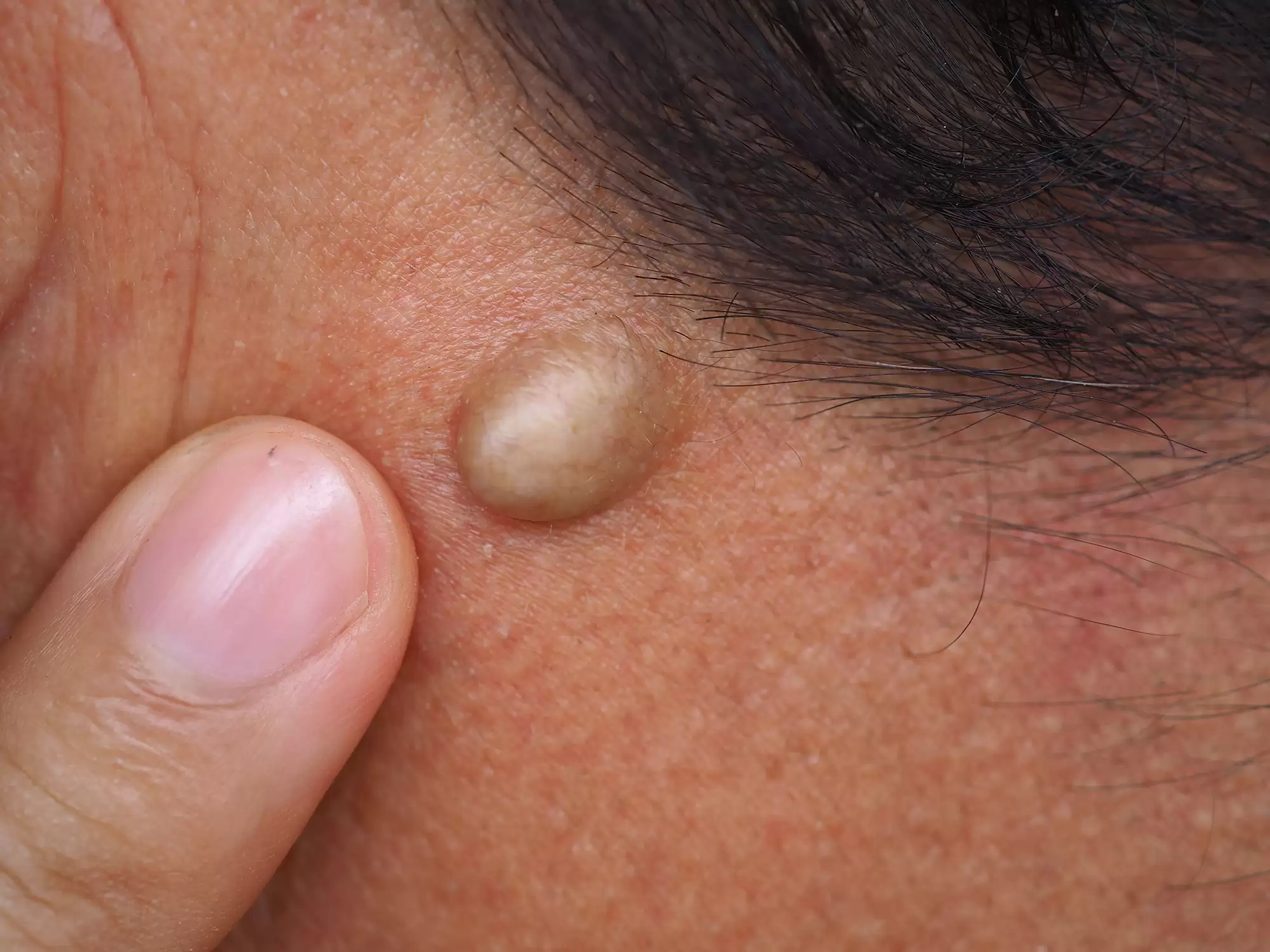
A sebaceous cyst, a common benign skin condition, forms when a hair follicle gets blocked and fills with keratin. Although often harmless, complications such as infection, pain, and rupture may require treatment, ranging from antibiotics to surgical removal.
If you're considering treatment for a sebaceous cyst, reach out to us or book a direct appointment with our dermatologist. At the CK Birla Hospital Jaipur, we are dedicated to ensuring that your sebaceous cyst treatment is as safe, comfortable, and effective as possible. We're here to guide you every step of the way toward a successful recovery.
Sebaceous cysts are formed by your sebaceous gland, which produces the oil (sebum) that coats your hair and skin. These cysts can develop if the gland or its duct becomes damaged or blocked, often due to trauma to the area, like a scratch, surgical wound, or skin condition such as acne. The cysts grow slowly, so the triggering trauma might have occurred weeks or months before noticing the cyst.
Causes of sebaceous cysts may include:
These factors contribute to the development of sebaceous cysts over time.

Untreated sebaceous cysts pose several risks, such as:
Seek medical attention for proper evaluation and treatment to avoid complications and misdiagnosis.
There are generally two main types of sebaceous cysts, based on their origin and location:
Sebaceous cysts are slow-growing, painless lumps/bumps unless inflamed or infected. While generally harmless, they can be removed if bothersome or for cosmetic reasons.
Cysts can be treated either by draining them or through surgical removal, often chosen for cosmetic purposes. Although generally harmless, they tend to recur without surgical intervention. Most doctors allow patients to select their preferred treatment method based on individual preferences. The treatment options are:
Post-surgery, antibiotic ointment is typically prescribed to prevent infection until healing is complete. Scar cream may also be provided to minimise surgical scars.
The cost of a sebaceous cyst treatment varies as per the specific type of treatment advised by a healthcare provider, such as:
The cost can also vary widely depending on several factors, including the location, the extent of the treatment, the doctor’s experience, and the hospital's pricing structure.
To get an explicit estimate for the cost of a sebaceous cyst treatment at the CK Birla Hospital Jaipur, contact the hospital directly. Additionally, you can consult with our board-certified dermatologist to discuss your specific needs and receive a personalised quote for the treatment.
Sebaceous cysts can sometimes be prevented by adopting these measures:
Remember, consulting a dermatologist for recurring issues is essential for tailored advice and treatment. These steps can help mitigate the risk, although complete prevention isn't always guaranteed.
Sebaceous cysts are typically diagnosed through a basic physical examination by doctors. However, if the cyst appears unusual, additional tests might be requested to rule out potential cancers, particularly if surgical removal is being considered.
These tests commonly employed for sebaceous cysts encompass:
Before undergoing treatment or surgery for a sebaceous cyst, following specific pre-treatment instructions is crucial for safety and effectiveness. Here's a breakdown of recommended guidelines:
Adhering to personalised instructions from your healthcare provider will optimise the treatment process and ensure successful outcomes.
Post-surgery care for a sebaceous cyst is critical for ensuring optimal healing and reducing the risk of complications. Here's a concise breakdown of the key post-surgery instructions:
Remember to attend follow-up appointments and watch for potential complications. Supporting your recovery with a balanced diet, hydration, and rest is key. Additionally, follow any scar care recommendations once the wound has fully healed. If you have questions or concerns, don't hesitate to consult your healthcare provider for guidance.
Recovering from a sebaceous cyst treatment involves careful wound care to support healing and prevent complications. Here are essential steps to aid your recovery:
Rest and elevation can alleviate discomfort, while follow-up appointments are crucial for progress assessment. Remember, healing takes time, and personalised advice from your doctor is key to a smooth recovery.
CK Birla Hospitals, Jaipur is among the eminent multi-special hospitals operating in the city for decades. The hospital has integrated the most amazing and experienced doctors including other staff members. We ensure dedicating ourselves to offering exceptional and satisfactory patient care. The primary objective behind the inception of this hospital is to make healthcare services available to everyone at an affordable cost including the finest treatment. So, if you are looking for an Dermatologist in Jaipur, then get in touch with our most skilled and highly talented healthcare professionals at RBH.
Sebaceous cysts are typically benign and not cancerous. They are sac-like structures filled with keratin and usually develop in hair follicles. Removal may be necessary for cosmetic or discomfort reasons.
It's not recommended to pop or squeeze a sebaceous cyst at home. This can lead to infection, pain, and recurrence. See a healthcare professional for proper evaluation and treatment.
Sebaceous cysts may persist or even grow larger without treatment. They often do not resolve on their own and typically require medical intervention such as drainage or surgical removal.
© 2024 RBH Jaipur. All Rights Reserved.